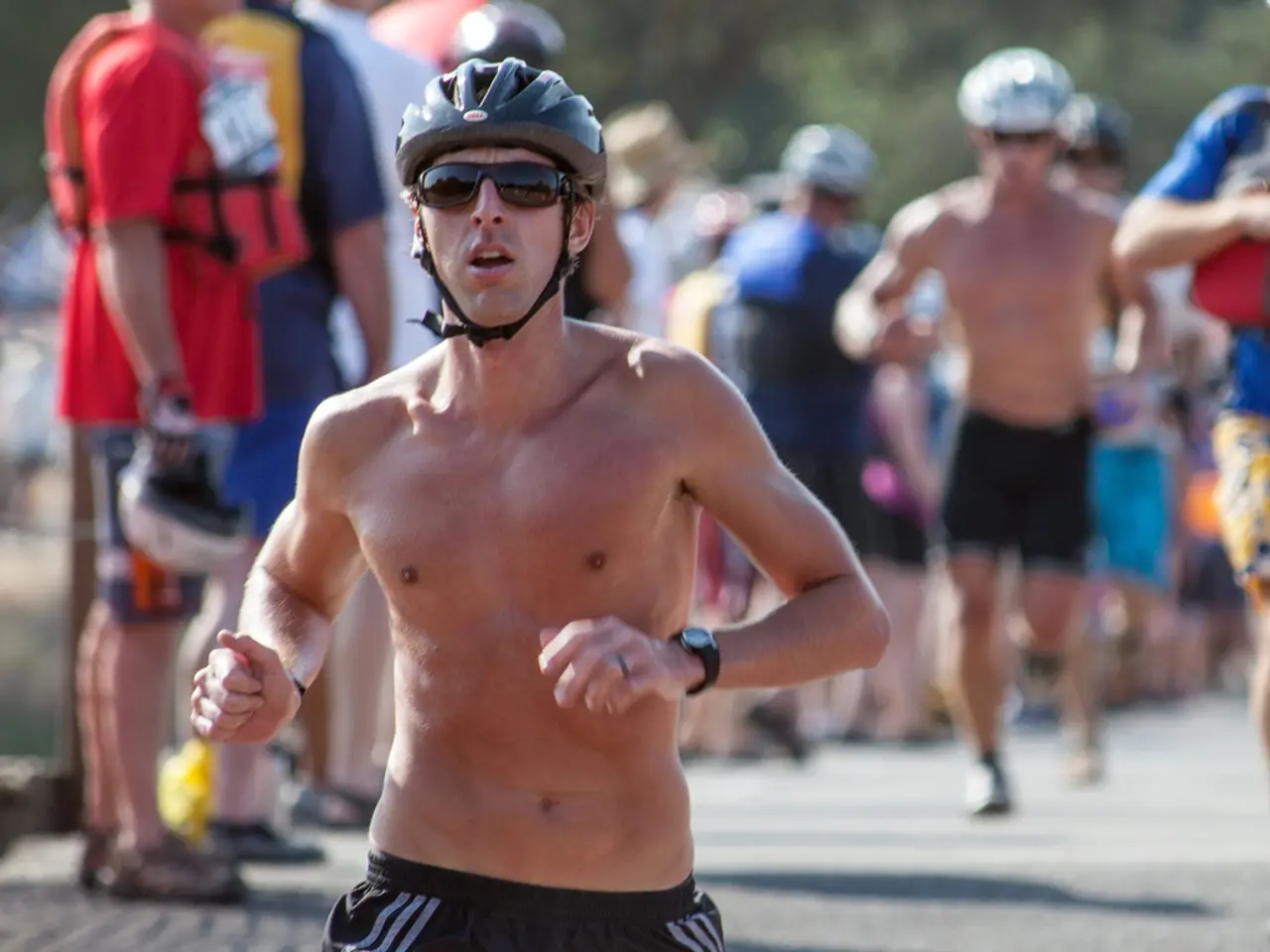Workout Sessions in High Temperatures Can Enhance Fitness - Learn Safe Practices for Performing Them Effectively
Training in Hot, Humid Conditions: A 'Poor Man's' Altitude Training for Endurance Athletes
Exercising in warm, humid conditions can offer a cost-effective alternative to altitude training, providing similar physiological adaptations that improve endurance performance in sports like triathlon, cycling, and running.
Heat training triggers the body to send more blood to the skin surface to promote sweating, leading to several key adaptations. One of these is an increase in plasma volume, which mirrors the effects of altitude training on red blood cells, increasing the blood's capacity to carry oxygen.
This increase in plasma volume, coupled with improved VO2 max and lactate threshold, boosts endurance capacity even in cooler conditions, not just hot environments. The enhanced cardiovascular strain forces the heart and lungs to work harder at the same workload, promoting greater training adaptations over time.
Heat training also improves the sweating response, with an earlier onset and higher rates, to better regulate body temperature and delay fatigue. Athletes also benefit from a lower resting core temperature, helping them better tolerate heat stress.
These adaptations typically begin within the first week of heat exposure and are usually consolidated within 10-14 days of consistent training. Heat training has been shown to boost time-trial power output by 6-8%, similar to gains seen after weeks of altitude training.
Furthermore, heat acclimation improves endurance through enhanced metabolic function and muscle blood flow, which support energy production, reduce muscle breakdown, and speed recovery.
To safely acclimate to summer conditions, start with small doses of training outside, like 30 minutes of easy activity, and be consistent. It may take about two weeks to acclimate to summer conditions. During training in hot conditions, it's important to hydrate more frequently.
Tish Hamilton, a veteran of 59 marathons and five ultramarathons, has learned to appreciate training in summer heat and humidity. She lives in Savannah, Georgia. For the best accuracy, wait until you've acclimated to the heat before using wearable patches to measure sweat rate, fluid, and sodium loss during heat training.
To cool down during heat training, consider using ice in your hat or sports bra, or pouring cold water over your head. Continue outdoor workouts to maintain heat-acclimatized gains, and these gains may wane about a month after cooler temperatures set in.
Before starting heat training, consult a doctor, especially if you have a medical condition. Monitor your heart rate and breathing rate during heat training, and be aware of any large jumps. Signs of dizziness, headaches, confusion, or chills are red flags to stop exercising.
In summary, training in hot, humid conditions mimics some altitude training benefits by stressing oxygen delivery and thermoregulation systems, thereby improving overall endurance performance without needing to go to high altitudes.
Science suggests that heat training, which classifies under fitness-and-exercise and sports, can offer a cost-effective alternative to altitude training, providing physiological adaptations similar to those in sports like triathlon, cycling, and running. For instance, this training improves the sweating response and lowers resting core temperature, both of which are health-and-wellness benefits.




